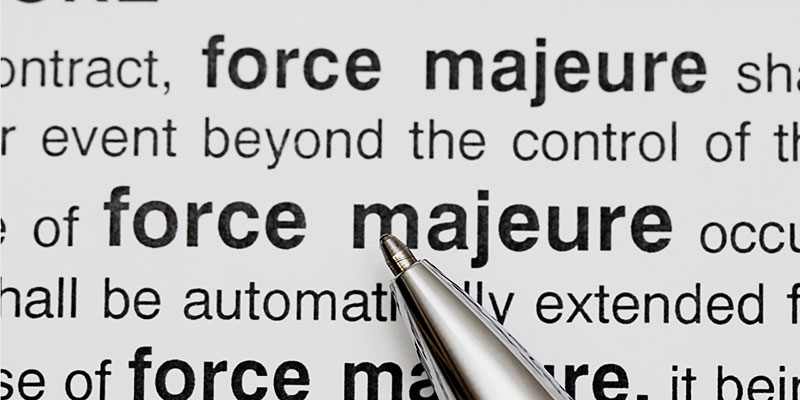3 steps to effectively handling the clause du jour
The effects of COVID-19 on the way we do business will be felt for years to come. In the world of contracting, a generally ignored clause has been thrust into the spotlight. There is no clause or even French term, for that matter, that has received as much attention these past few months as force majeure.
Act of God, call it what you will, this clause is now front and center requiring organizations to assess the impact within the context of both their current and future contracts and the potential for resulting supply chain, service and vendor failures.
Let the Force Majeure Be with You
The generally accepted raison d’etre of force majeure is to address an event or occurrence that is outside the reasonable control of contracting parties; often referred to as an ‘Act of God’. –
Each jurisdiction handles force majeure differently. However, in most cases, force majeure provisions are standard in contracts and are often determined by common law or statute. That being said, there are some common characteristics of a force majeure event:
- Must be outside of the reasonable control of the parties
- Prevents, hinders, or impedes the affected party from performing its stated obligation(s)
- Reasonable steps have been taken to avoid or mitigate the event
COVID-19 and Force Majeure – The Perfect Storm
Regardless of where one believes COVID-19 originated from, contract professionals probably agree that it falls into the category of “Act of God” resulting in force majeure’s new found popularity. Although COVID-19 has actioned the most common force majeure provisions in contracts, many legal and contracting professionals across industries are finding themselves scrambling to determine applicability and the ultimate impact.
To help organizations get their arms around the where, what, and how of force majeure, the following three steps should be considered:
1. Discovery: Identify clauses and associated risk
You can’t determine the approach if you don’t know what you have and where to find it. This essential first step focuses on the identification of all applicable provisions across a company’s contract repository. Fundamental to the process is the use of AI technology to quickly and thoroughly extract force majeure references, termination, notice, and other key provisions. Having a complete view will determine next steps and the ultimate success of the entire initiative.
2. Prioritization & Solutioning: Understanding next steps based on risk and other factors
Now that you know what you have, you can determine an optimal risk mitigating approach. Analysis includes gaining an understanding of the specific provisions to determine applicability of force majeure, whether notices must be given to counterparties, if parties are able to terminate the contract, and the manner in which termination must occur. Through this exercise, organizations can make informed decisions about what steps should or should not be taken and to establish a well-conceived plan.
3. Delivery: Execute and track against plan
With the underlying provisions identified, analysis complete, and a solid plan in place, all that is left to do is act. Associated activities will vary and be based on what was identified and learned during step 2. Action may include outreach to counterparties, written legal notices, tracking of responses, and negotiating amendments.
To meet demanding timelines and to ease the burden of the workload, many organizations leverage a combination of technology and the expertise of 3rd party contract professionals to execute and provide support across all three phases of the project.
Bonjour – Au Revoir Force Majeure
As a result of COVID-19, organizations around the world are facing very real and significant impacts to their businesses. Addressing force majeure across a company’s contracts databases should not create additional or unnecessary stress — if handled properly. A structured and well executed initiative leveraging a combination of technology, process, and expert resources can mitigate risk exposure and help drive toward the successful management of force majeure obligations by both the company and its counterparties.
The ultimate success and effectiveness of the project rests on how quickly and organization is able to mobilize and respond well ahead of any potential breakdown of contractual obligations. Waiter. I’ll have the clause du jour!


